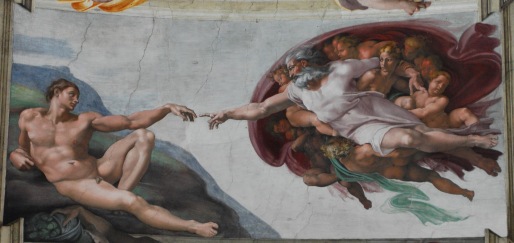Today, I wanted to discuss another of the city-states in Kalanesia, much like I did for Halifar. Today, we’ll be checking out Exeline.
Exeline originally started as an impromptu PC home base for the first Dungeons and Dragons 4E campaign I ran. It was a metropolis that they could find whatever they needed, and it ended up being the main setting for my NaNoWriMo project.
When I sat down to work on Kalanesia, I knew I wanted to incorporate that place, and it slowly took shape. A lot of it, in particular, was fleshed out more as I worked on my novel.
Firstly, if you look at it’s first mention, its main focus is the waterfall the city is built nearby. Called the Blue Curtain (I’m assuming you can guess why), the waterfall pours into a lake that contains a small isthmus that extends from the cliff face, on which the major portion of the city is built.
Another main feature is how the city is divide. The temple disctrict is located on the edge of the isthmus closest to the waterfall, where the city’s cathedral of Aza Mathera is located. nearby is the market district, which is also connected to the docks. However, heading from the temple district, is a path that lead up portions of the cliff’s face, where the nobles have carved villas.
The docks were built for the barges that travel up and down the Blue and Falling rivers, which connect Exeline with Tri Riven and Waystrand to the south and Sargesia to the southeast. They carry Exeline’s major exports, as well as taking in its imports. In fact, the river is the major reason Exeline even exists.
This is largely because the city itself sprung up from a small village after the founding of the Mount Shoran Observatory. Diviners and stargazers found the peak of the mountain where the Blue Curtain fell to be a perfect spot for viewing the heavens. They established the observatory about a century ahead of the Blue Empire creation, and the trade between Waystrand and the wizards grew the city.
In large part, the major export of the city comes from its orchards, namely fire apples, bright read and slightly spicy, and honey pears. In the hills just ouside the city, what were once wild orchards have been cultivated and industrialized. Unlike the southern areas were vineyards more commonly produce wine, Exeline exports ciders, some of which are held in as high esteem as rare Waystradian vintages. In addition to fruits, Exeline’s mountain is home to various gemstone and granite mines that are also sent out. However, the granite industry pales in comparison to the marble that is harvested from Waystrand.
Exeline, because of its connection to learning, has developed into one of the first major democracies in the area of the former Blue Empire. During the Bloodrift War, it was the site of the final major battle and was nearly destroyed. After this, the commoners and merchants were more numerous than the noble families, who began hoarding resources. In order to prevent open class warfare, the priests of Aza Mathera suggested that a council be established with a representative of each faction: a priest, a merchant, a noble, a commoner, a representative from Mount Shoran Observatory, and a farmer from the orchards. As such, it is the second most independent city-state from Waystrand, topped only by Sargesia.












